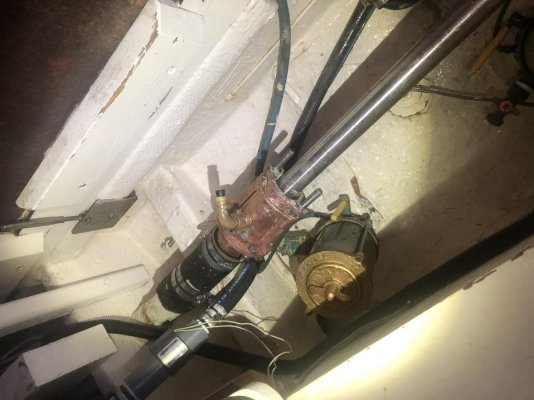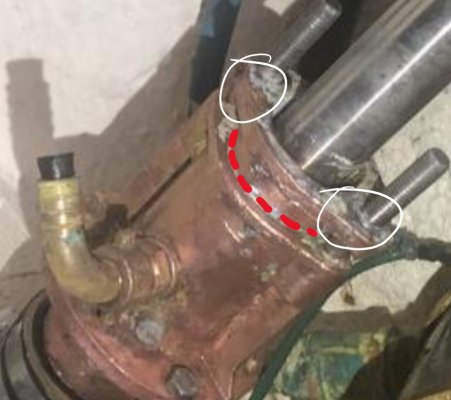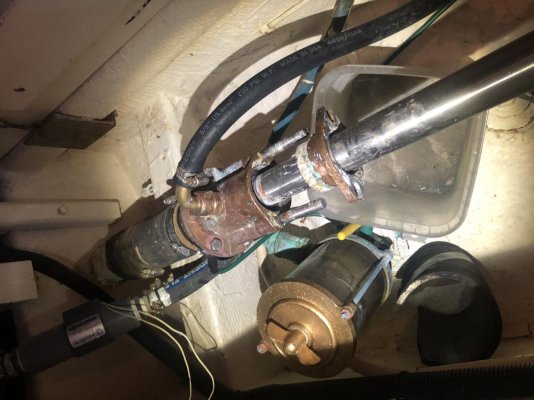There appears to be some scale on your shaft and salt on the follower. Wire brush the heck out of everything.
I agree to double-nut the stud, unless you can find a stud puller (the collet type), but I would also heat the flange area of the stuffing box and mechanically agitate both the flange body (radially) and the stud (axially) with a few hammer taps to break the set stud threads free. A little penetrating oil overnight ay help too (I like Kroil). Bronze and SS usually come apart relatively well, but it is likely an interference fit, so it will be tight.
Getting the packing out might be a tough as it looks like it hasn't been serviced or has been over tightened in the past. Have fun with that use patience and take breaks. Use screws, packing pullers, and picks (dental picks if you can get them). It's the worst part of the job.
As there is a cooling/flushing water connection on the box you may find a lantern ring in there too. Old school ones are bronze. Consider fitting a PTFE replacement one that wraps on like a piece of packing. You can buy a chunk that you cut to size and wrap it on like packing. Garlock, John Crane, etc make them. They are way better than the original metal one. If you don't have a lantern ring in there, someone may have already removed it. In this case, the water connection probably doesn't do anything at all as all of the radial clearance for flush flow will be taken up by the packing. Honestly in this application, with modern packing, lantern rings are of negligible value, unless you boat in skinny water with sand intrusion. It is quite common for the old metal ones to be missing, as they are a pain to deal with, and often just wear the shaft.
Chamfer cut the packing to size. If you have a piece of pipe the same size as your shaft that works well. If not, you appear to have enough shaft away from the gland to cut a few pieces. It's not correct, but it is better than having the wrong size packing. Emery cloth out any knife marks you make.
When you put it back together, stagger the rings and slide each piece down as far as you can before put in the next piece. A little water soluble lube works great too. I use a chunk of plastic pipe (well actually I used a nylon hose barb) that I slotted longitudinally. I snap this over the shaft and drive the packing in to the gland with this tool. Highly recommend this. It works great as it gets the packing set straight and tight into the gland.
If the box is radially concentric to the shaft, you shouldn't have to hammer the packing to fit. Instead, support the gland so that it is concentric and not sagging, after all, it is "hanging" on a hose. An easy way of measuring packing size is with a dowel or pencil chunk.
Keep in mind that the packing follower imparts an axial load onto the packing to compress it radially inwards to the shaft and outwards to the stuffing box. The frictional drag makes it so most of the load and therefore compression happens on the ring closest to the follower, and NOT the ring deepest in the gland. This is somewhat counterintuitive. Save your best fitting packing ring for last.
Snug it up and run it. Let the packing break in, heat up and swell a bit. Tighten it slowly, bringing up the gland nuts a flat or half a flat at a time. Most people don't spend enough time letting the packing break in. Once you tighten the packing and compress it, it doesn't "uncompress" or rebound back into shape, if you back off on the gland. Take your time and do it right and modern packing will last a long time.
I like GFO. Real GFO with the letters GFO, printed on the packing.




